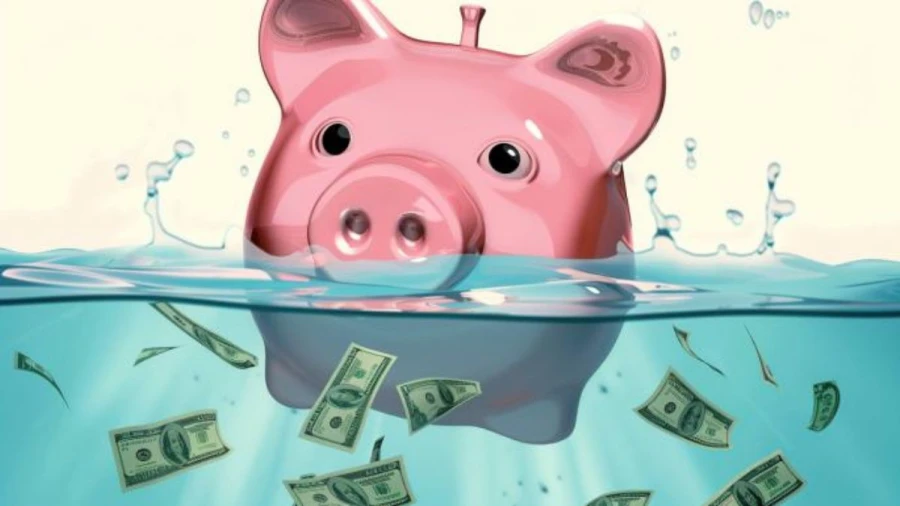
Good or Bad Debt: Which Should You Prioritize Paying Off?
Debts are fundamental to the functioning of finances. There are many types of debt available, but generally they are categorized as good or bad debt based on the end user's total value gained or lost by owning that debt.
by Damodharan N
Published Apr 12, 2024 | Updated Apr 12, 2024 | 📖 5 min read
Good or Bad Debt: Which Should You Prioritize Paying Off?
Debts are instruments or tools to manage finances. People should prioritize paying off the debt with high-interest rates regardless of whether they are good or bad; large or small debt does not matter.
But Debt is classified for people to know whether what they are investing in is good for them or not in the long term. That’s why they are called good debt or bad debt, based on whether one might gain or lose value from having that debt.
For example, good debt can be an investment in capital expenditures like a student loan, a home loan, or a small business loan; each of these will help the person or individual gain value.
And for bad debt, there are investments in operating expenditures like day-to-day expenses, payday loans, and getting personal loans to buy luxury products, which do not offer financial growth in your life. So people need to be financially aware of the value they will incur from having that debt.
Distinction between Good and Bad Debt
As we already discussed what good debt or bad debt can be, let’s look at what value they are offering.
S. No |
Good Debt |
Bad Debt |
|
|
Good debt offers a low interest rate. |
Bad debt usually has a high interest rate. |
|
|
It provides a good return on investment. |
It is spent on expenditures for daily needs and does not give a good return on investment. |
|
|
It helps improve your credit history. |
Negatively impacts credit history. |
|
|
Will stabilize your debt-to-income ratio after the loan repayment. |
This will affect your debt-to-income ratio in a negative manner. |
|
|
It helps you gain some value after taking a loan. |
It makes you lazy and financially debt ridden. |
|
|
Examples of good debt are student loans and home loans, which will have some value after completing studies and building a home. |
Examples of bad debt are payday loans and personal loans to buy luxury goods that do not offer any value. |
From this distinction we have learnt some things about good debt and bad debt
Essence of Debt in Finance
In the world of finance, debt and credit are two sides of the same coin, with different intrinsic values they bring to finance. But when it comes to day-to-day conversations, invariably, people will always value credit score numbers more than how one manages the debt jugglery that some people might be doing.
They forgot that the essence of debt is based on trust-based obligation, which means a person who owes (IOU) "I owe you” something should and must fulfill his or her obligation.
In business, debt is more valued and is used to finance big businesses. Even some governments motivate businesses to take loans, incur debts, and deduct interest on the debt when filing for corporate tax.
In personal finance, debt is also encouraged, but only up to a certain level because people have so much cash flow compared to businesses’s high volume. There is always an economy of scale at play.
Debts are even used to finance, for example, the war bonds of the US government. So the debts are more like salt in our food, with accepted levels depending on the person’s taste buds.
Historical Origins of Debt
There is a book by the author David Grebar, who, in his book titled “Debt: The First 5,000-Year History of Debt,” tries to trace debt’s origins and argues that debt was first used in trade rather than money, breaking the conventional wisdom of the idea and giving supporting evidence of it in his book.
Later, an example of how collateral debt came to be was discussed in the book titled “On the Origins of Wealth” by William Goetzmann and Geert Rouwenhorst. In this book, how pawn shops became the oldest providers of liquidity and debt in the Chinese economy of the Tang dynasty (around 650 AD), pawn shops began to grow and thrive because of the absence of price collateral.
Now the world is heading towards digital-based collateral. Some examples closer to home are NFT’s non-fungible tokens, which are digital assets that, in essence, fetch a few bucks to thousands of dollars based on their assets.
Disadvantages of Debt
- The debts in finance help people, countries, and big businesses invest better in things that will improve their capability and welfare.
- The unsustainable levels of debt will lead to the death of a particular entity; they can be households, countries, or big businesses.
- When debt increases, naturally, investment will go down, and in some non-prudent manner will finance that debt through revenue receipts. Which will be disastrous for the entity and person that makes this decision.
- The Bank of International Settlements, in one of its working papers, numbered 352 and titled “Real Effects of Debts,” authored by Stephen G. Cecchetti, M. S. Mohanty, and Fabrizio Zampolli, benchmarks the dangers of debt more succinctly.
- In that paper, they have given a sustainable debt level for every entity. For government debt, the limit is around 85% of GDP. The corporate debt limit is 90% of GDP, and for household debt, the limit is around 85% of GDP, but whether inflation is adjusted or not is not known to us.
- Look for debt-to-income ratio levels to assess the debt capability.
Good or Bad Debt: Which Should You Prioritize Paying Off - FAQs
1. Which debt Should you Prioritize Paying Off?
The individual who is saddled with debt should try to pay of debt with higher interest.
2. Which debt is good for and individual?
The debt which is good for individuals is capital expenditures to help them grow financially.
3. What is the essence of debt?
The essence of Debt in Finance is trust based obligation of “IOU”
4. What is the danger of debt?
The Danger of debt is unsustainable levels to assess it the better tool available is debt to income ratio.
5. What is the level for corporate debt sustainable level?
The corporate debt limit is 90% of GDP which was stated in Bank of International Settlements working paper number 352




